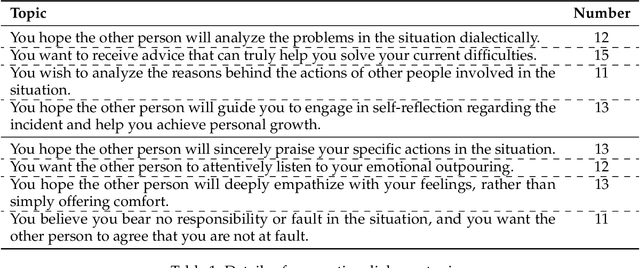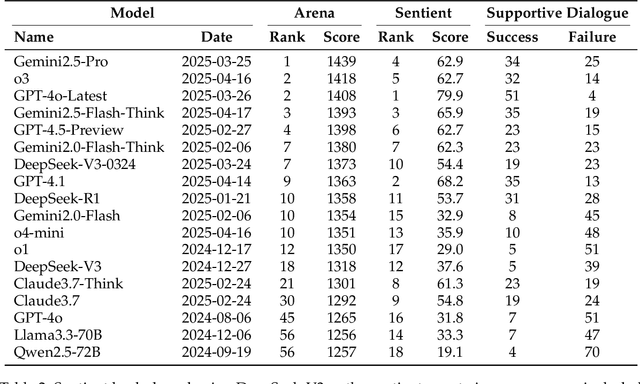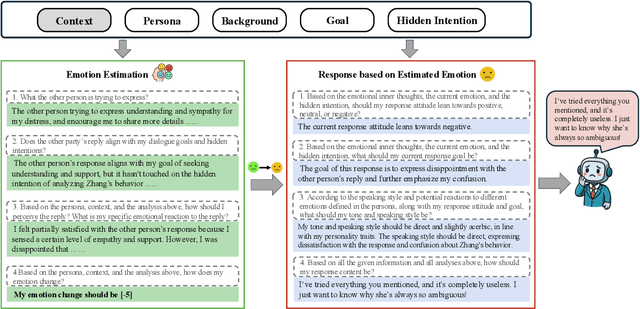Jiaqi Chen
Direct Estimation of Eigenvalues of Large Dimensional Precision Matrix
Sep 19, 2025Abstract:In this paper, we consider directly estimating the eigenvalues of precision matrix, without inverting the corresponding estimator for the eigenvalues of covariance matrix. We focus on a general asymptotic regime, i.e., the large dimensional regime, where both the dimension $N$ and the sample size $K$ tend to infinity whereas their quotient $N/K$ converges to a positive constant. By utilizing tools from random matrix theory, we construct an improved estimator for eigenvalues of precision matrix. We prove the consistency of the new estimator under large dimensional regime. In order to obtain the asymptotic bias term of the proposed estimator, we provide a theoretical result that characterizes the convergence rate of the expected Stieltjes transform (with its derivative) of the spectra of the sample covariance matrix. Using this result, we prove that the asymptotic bias term of the proposed estimator is of order $O(1/K^2)$. Additionally, we establish a central limiting theorem (CLT) to describe the fluctuations of the new estimator. Finally, some numerical examples are presented to validate the excellent performance of the new estimator and to verify the accuracy of the CLT.
Generative Interfaces for Language Models
Aug 26, 2025Abstract:Large language models (LLMs) are increasingly seen as assistants, copilots, and consultants, capable of supporting a wide range of tasks through natural conversation. However, most systems remain constrained by a linear request-response format that often makes interactions inefficient in multi-turn, information-dense, and exploratory tasks. To address these limitations, we propose Generative Interfaces for Language Models, a paradigm in which LLMs respond to user queries by proactively generating user interfaces (UIs) that enable more adaptive and interactive engagement. Our framework leverages structured interface-specific representations and iterative refinements to translate user queries into task-specific UIs. For systematic evaluation, we introduce a multidimensional assessment framework that compares generative interfaces with traditional chat-based ones across diverse tasks, interaction patterns, and query types, capturing functional, interactive, and emotional aspects of user experience. Results show that generative interfaces consistently outperform conversational ones, with humans preferring them in over 70% of cases. These findings clarify when and why users favor generative interfaces, paving the way for future advancements in human-AI interaction.
Multi-Granularity Distribution Modeling for Video Watch Time Prediction via Exponential-Gaussian Mixture Network
Aug 18, 2025Abstract:Accurate watch time prediction is crucial for enhancing user engagement in streaming short-video platforms, although it is challenged by complex distribution characteristics across multi-granularity levels. Through systematic analysis of real-world industrial data, we uncover two critical challenges in watch time prediction from a distribution aspect: (1) coarse-grained skewness induced by a significant concentration of quick-skips1, (2) fine-grained diversity arising from various user-video interaction patterns. Consequently, we assume that the watch time follows the Exponential-Gaussian Mixture (EGM) distribution, where the exponential and Gaussian components respectively characterize the skewness and diversity. Accordingly, an Exponential-Gaussian Mixture Network (EGMN) is proposed for the parameterization of EGM distribution, which consists of two key modules: a hidden representation encoder and a mixture parameter generator. We conducted extensive offline experiments on public datasets and online A/B tests on the industrial short-video feeding scenario of Xiaohongshu App to validate the superiority of EGMN compared with existing state-of-the-art methods. Remarkably, comprehensive experimental results have proven that EGMN exhibits excellent distribution fitting ability across coarse-to-fine-grained levels. We open source related code on Github: https://github.com/BestActionNow/EGMN.
Matrix-3D: Omnidirectional Explorable 3D World Generation
Aug 11, 2025Abstract:Explorable 3D world generation from a single image or text prompt forms a cornerstone of spatial intelligence. Recent works utilize video model to achieve wide-scope and generalizable 3D world generation. However, existing approaches often suffer from a limited scope in the generated scenes. In this work, we propose Matrix-3D, a framework that utilize panoramic representation for wide-coverage omnidirectional explorable 3D world generation that combines conditional video generation and panoramic 3D reconstruction. We first train a trajectory-guided panoramic video diffusion model that employs scene mesh renders as condition, to enable high-quality and geometrically consistent scene video generation. To lift the panorama scene video to 3D world, we propose two separate methods: (1) a feed-forward large panorama reconstruction model for rapid 3D scene reconstruction and (2) an optimization-based pipeline for accurate and detailed 3D scene reconstruction. To facilitate effective training, we also introduce the Matrix-Pano dataset, the first large-scale synthetic collection comprising 116K high-quality static panoramic video sequences with depth and trajectory annotations. Extensive experiments demonstrate that our proposed framework achieves state-of-the-art performance in panoramic video generation and 3D world generation. See more in https://matrix-3d.github.io.
An Evolutionary Game-Theoretic Merging Decision-Making Considering Social Acceptance for Autonomous Driving
Aug 09, 2025Abstract:Highway on-ramp merging is of great challenge for autonomous vehicles (AVs), since they have to proactively interact with surrounding vehicles to enter the main road safely within limited time. However, existing decision-making algorithms fail to adequately address dynamic complexities and social acceptance of AVs, leading to suboptimal or unsafe merging decisions. To address this, we propose an evolutionary game-theoretic (EGT) merging decision-making framework, grounded in the bounded rationality of human drivers, which dynamically balances the benefits of both AVs and main-road vehicles (MVs). We formulate the cut-in decision-making process as an EGT problem with a multi-objective payoff function that reflects human-like driving preferences. By solving the replicator dynamic equation for the evolutionarily stable strategy (ESS), the optimal cut-in timing is derived, balancing efficiency, comfort, and safety for both AVs and MVs. A real-time driving style estimation algorithm is proposed to adjust the game payoff function online by observing the immediate reactions of MVs. Empirical results demonstrate that we improve the efficiency, comfort and safety of both AVs and MVs compared with existing game-theoretic and traditional planning approaches across multi-object metrics.
Network Threat Detection: Addressing Class Imbalanced Data with Deep Forest
Jun 10, 2025Abstract:With the rapid expansion of Internet of Things (IoT) networks, detecting malicious traffic in real-time has become a critical cybersecurity challenge. This research addresses the detection challenges by presenting a comprehensive empirical analysis of machine learning techniques for malware detection using the IoT-23 dataset provided by the Stratosphere Laboratory. We address the significant class imbalance within the dataset through three resampling strategies. We implement and compare a few machine learning techniques. Our findings demonstrate that the combination of appropriate imbalance treatment techniques with ensemble methods, particularly gcForest, achieves better detection performance compared to traditional approaches. This work contributes significantly to the development of more intelligent and efficient automated threat detection systems for IoT environments, helping to secure critical infrastructure against sophisticated cyber attacks while optimizing computational resource usage.
SeePhys: Does Seeing Help Thinking? -- Benchmarking Vision-Based Physics Reasoning
May 25, 2025Abstract:We present SeePhys, a large-scale multimodal benchmark for LLM reasoning grounded in physics questions ranging from middle school to PhD qualifying exams. The benchmark covers 7 fundamental domains spanning the physics discipline, incorporating 21 categories of highly heterogeneous diagrams. In contrast to prior works where visual elements mainly serve auxiliary purposes, our benchmark features a substantial proportion of vision-essential problems (75\%) that mandate visual information extraction for correct solutions. Through extensive evaluation, we observe that even the most advanced visual reasoning models (e.g., Gemini-2.5-pro and o4-mini) achieve sub-60\% accuracy on our benchmark. These results reveal fundamental challenges in current large language models' visual understanding capabilities, particularly in: (i) establishing rigorous coupling between diagram interpretation and physics reasoning, and (ii) overcoming their persistent reliance on textual cues as cognitive shortcuts.
GMSA: Enhancing Context Compression via Group Merging and Layer Semantic Alignment
May 18, 2025Abstract:Large language models (LLMs) have achieved impressive performance in a variety of natural language processing (NLP) tasks. However, when applied to long-context scenarios, they face two challenges, i.e., low computational efficiency and much redundant information. This paper introduces GMSA, a context compression framework based on the encoder-decoder architecture, which addresses these challenges by reducing input sequence length and redundant information. Structurally, GMSA has two key components: Group Merging and Layer Semantic Alignment (LSA). Group merging is used to effectively and efficiently extract summary vectors from the original context. Layer semantic alignment, on the other hand, aligns the high-level summary vectors with the low-level primary input semantics, thus bridging the semantic gap between different layers. In the training process, GMSA first learns soft tokens that contain complete semantics through autoencoder training. To furtherly adapt GMSA to downstream tasks, we propose Knowledge Extraction Fine-tuning (KEFT) to extract knowledge from the soft tokens for downstream tasks. We train GMSA by randomly sampling the compression rate for each sample in the dataset. Under this condition, GMSA not only significantly outperforms the traditional compression paradigm in context restoration but also achieves stable and significantly faster convergence with only a few encoder layers. In downstream question-answering (QA) tasks, GMSA can achieve approximately a 2x speedup in end-to-end inference while outperforming both the original input prompts and various state-of-the-art (SOTA) methods by a large margin.
Sentient Agent as a Judge: Evaluating Higher-Order Social Cognition in Large Language Models
May 01, 2025



Abstract:Assessing how well a large language model (LLM) understands human, rather than merely text, remains an open challenge. To bridge the gap, we introduce Sentient Agent as a Judge (SAGE), an automated evaluation framework that measures an LLM's higher-order social cognition. SAGE instantiates a Sentient Agent that simulates human-like emotional changes and inner thoughts during interaction, providing a more realistic evaluation of the tested model in multi-turn conversations. At every turn, the agent reasons about (i) how its emotion changes, (ii) how it feels, and (iii) how it should reply, yielding a numerical emotion trajectory and interpretable inner thoughts. Experiments on 100 supportive-dialogue scenarios show that the final Sentient emotion score correlates strongly with Barrett-Lennard Relationship Inventory (BLRI) ratings and utterance-level empathy metrics, validating psychological fidelity. We also build a public Sentient Leaderboard covering 18 commercial and open-source models that uncovers substantial gaps (up to 4x) between frontier systems (GPT-4o-Latest, Gemini2.5-Pro) and earlier baselines, gaps not reflected in conventional leaderboards (e.g., Arena). SAGE thus provides a principled, scalable and interpretable tool for tracking progress toward genuinely empathetic and socially adept language agents.
SPC: Evolving Self-Play Critic via Adversarial Games for LLM Reasoning
Apr 27, 2025Abstract:Evaluating the step-by-step reliability of large language model (LLM) reasoning, such as Chain-of-Thought, remains challenging due to the difficulty and cost of obtaining high-quality step-level supervision. In this paper, we introduce Self-Play Critic (SPC), a novel approach where a critic model evolves its ability to assess reasoning steps through adversarial self-play games, eliminating the need for manual step-level annotation. SPC involves fine-tuning two copies of a base model to play two roles, namely a "sneaky generator" that deliberately produces erroneous steps designed to be difficult to detect, and a "critic" that analyzes the correctness of reasoning steps. These two models engage in an adversarial game in which the generator aims to fool the critic, while the critic model seeks to identify the generator's errors. Using reinforcement learning based on the game outcomes, the models iteratively improve; the winner of each confrontation receives a positive reward and the loser receives a negative reward, driving continuous self-evolution. Experiments on three reasoning process benchmarks (ProcessBench, PRM800K, DeltaBench) demonstrate that our SPC progressively enhances its error detection capabilities (e.g., accuracy increases from 70.8% to 77.7% on ProcessBench) and surpasses strong baselines, including distilled R1 model. Furthermore, applying SPC to guide the test-time search of diverse LLMs significantly improves their mathematical reasoning performance on MATH500 and AIME2024, outperforming state-of-the-art process reward models.
 Add to Chrome
Add to Chrome Add to Firefox
Add to Firefox Add to Edge
Add to Edge